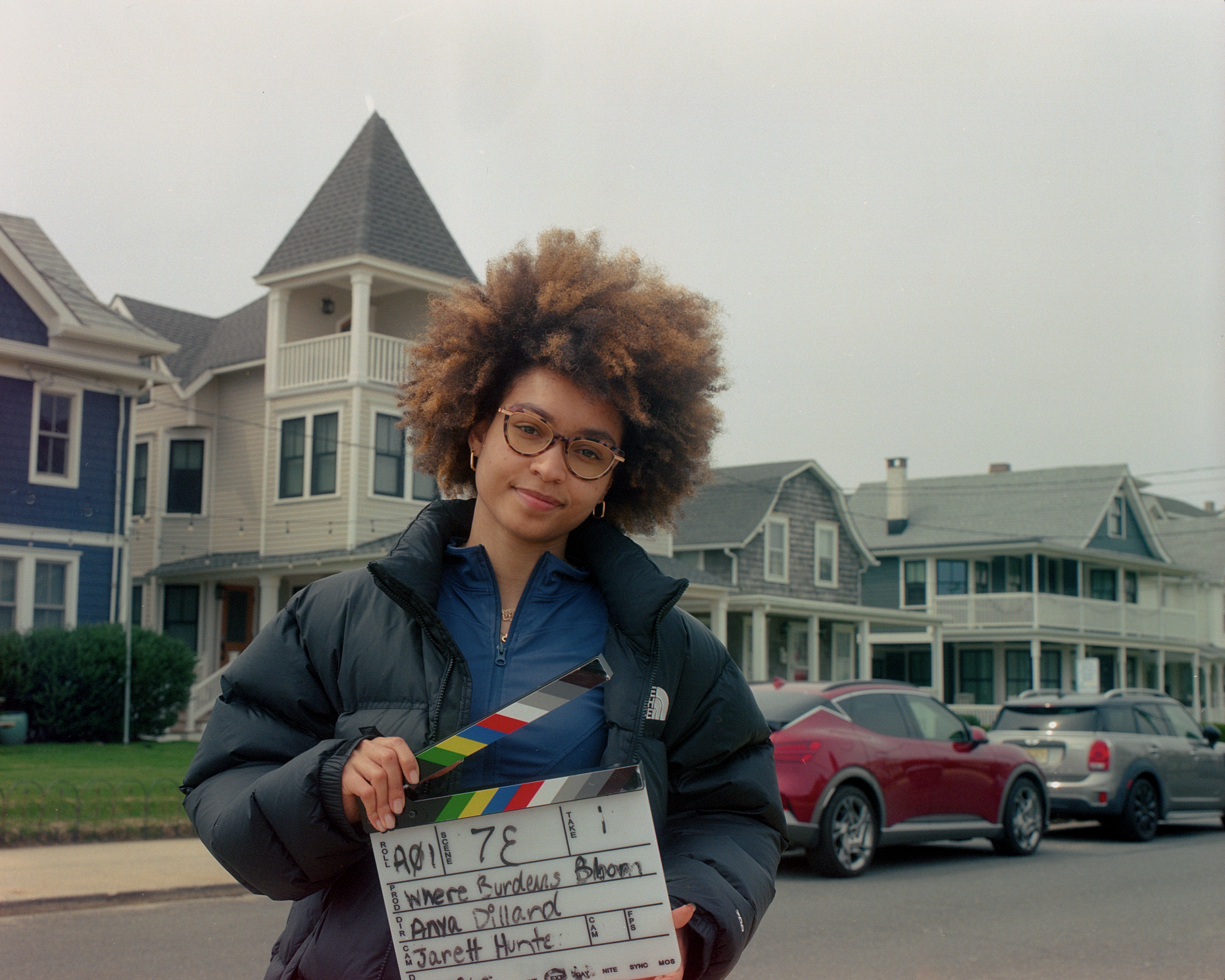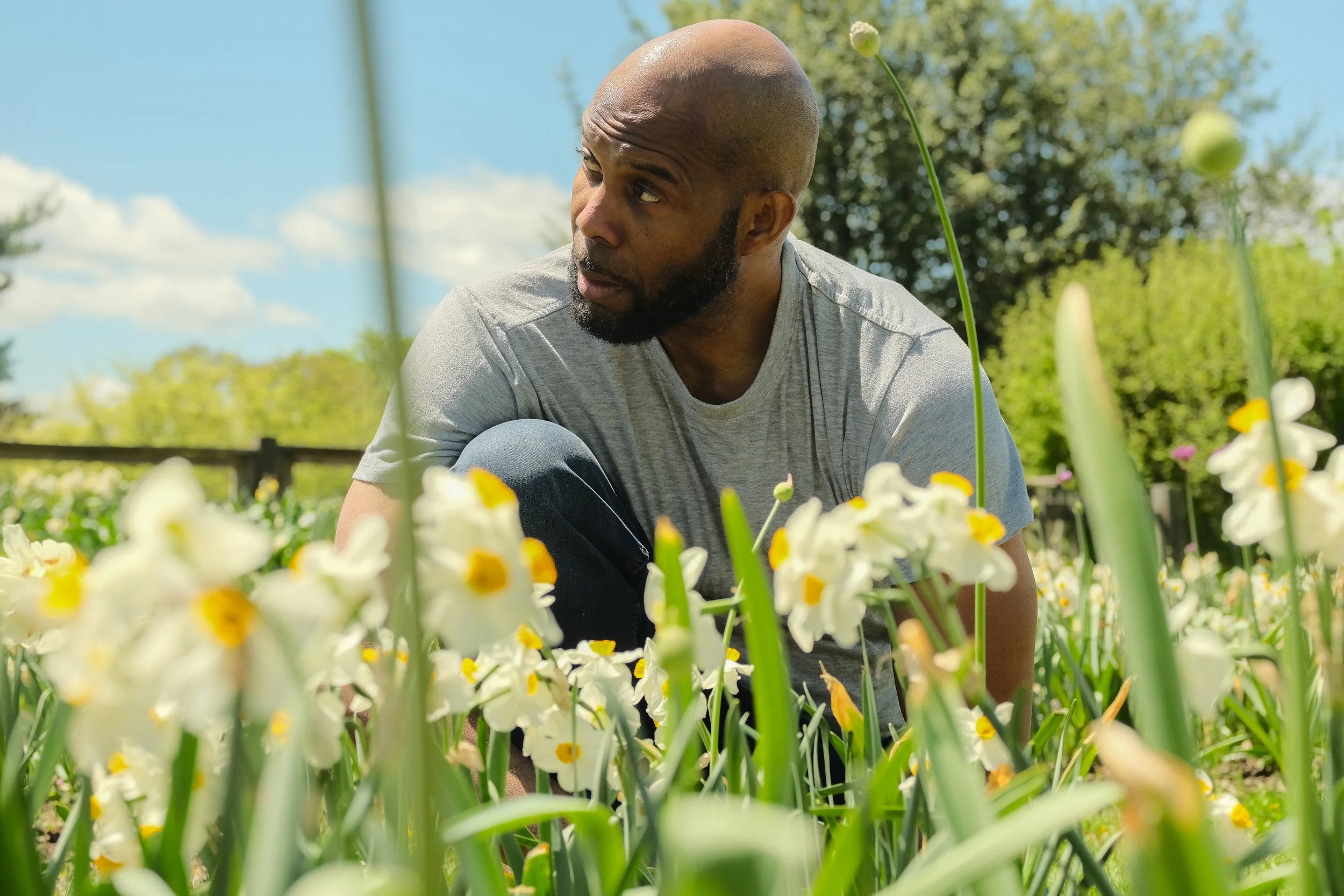
When Burdens Bloom
Written & Directed by Anya Dillard | Cinematography Jarett Hunter
Where Burdens Bloom is a lyrically experimental narrative short film that follows Dimah Howard, a young Black ballerina, as she grapples with grief and identity on the first anniversary of her father’s death. After receiving a scholarship to attend a prestigious dance academy, Dimah moves to New York City to pursue her dreams. However, just one year into her tenure, her father passed away suddenly, with her inability to cope sending her into a downward spiral. Struggling to balance the pressures of her craft with the weight of her loss, Dimah faces a pivotal choice: stay in the city to complete her dance education, or return home to heal and reconnect with her roots.
[ CURRENTLY IN POST-PRODUCTION ]
Director’s Statement
As a black woman, as someone who founded a non-profit at just 16 years old, and even as a double major, double minor, double honors college student (....my lord), I have always been seen as a high-functioning workaholic. I was raised in a family full of overachieving, ultra-creative people who never pressured me to pursue any one goal but instead instilled in me the idea that I could do any and everything I set my mind to. While this mantra gave me the confidence to grow into my own ambition, it also made it extremely hard to gauge when I was overwhelming myself or putting too much on my plate as a young adult.
In 2020 – while leading some of the largest non-violent demonstrations in my hometown, applying for colleges, and being President of my high school's first all-female and all-BIPOC student council cabinet – I burnt out and had a severe emotional breakdown. As someone who had never suffered from clinical depression or anxiety, seeing how burnout could conjure such a visceral disconnect between my mind and body was extremely scary for me.
After taking several months to prioritize self-care, recalibrate my circadian rhythm, and reestablish a healthy relationship with my body — through meditation, yoga, and an old love of mine, dance – I realized that so much of the weight that we carry, particularly as black women, resides in the parts of ourselves that we lend the least attention to: the muscles we neglect to stretch, the words we bottle up along with our emotions, the lungs that we often only give enough time to take shallow breaths. In Where Burdens Bloom, this concept is illuminated through the motif of ballet, which serves as a powerful metaphor for the physical and emotional endurance of Black women who balance various levels of societal expectation.
Ballet – with its rigid postures, precise movements, and unwavering pursuit of perfection – mirrors the internal struggles faced by Dimah as she strives to meet the external demands placed upon her in the world of dance and society. Throughout the film, ballet is used as a language to express Dimah’s emotional fragmentation. As Dimah pushes her body to its limits, each pirouette, leap, and plié becomes symbolic of the emotional toll she bears both as a ballerina and grieving daughter. The physical pain she endures — cracked toes, aching joints, and strained muscles — parallels the psychological strain of constantly performing in a world that demands she be unbreakable. The elegance and grace demanded by ballet stand in stark contrast to the hidden, internal vitriol that Dimah’s body is naturally experiencing, just as the poise expected of Black women in society often masks their deep emotional distress.
Where Burdens Bloom will delve into the struggle for balance that many black women face while shining a light on the emotional cost of striving to meet unattainable standards. By excavating the nuances of self-harm and workaholism, Dimah’s journey serves as a cautionary tale about the importance of choosing to take care of oneself during times of loss, grief, and emotional crisis. Writing the screenplay for this film served as a genuinely therapeutic exercise for me; it encouraged me to foster a healthier relationship between my self-care and the pursuit of my many goals, and it has since helped me to grow in my ever-evolving relationship with “rest” as well. For these reasons, I would love to adapt this screenplay into a living, breathing short film.”
— Anya Dillard

Stills Gallery










